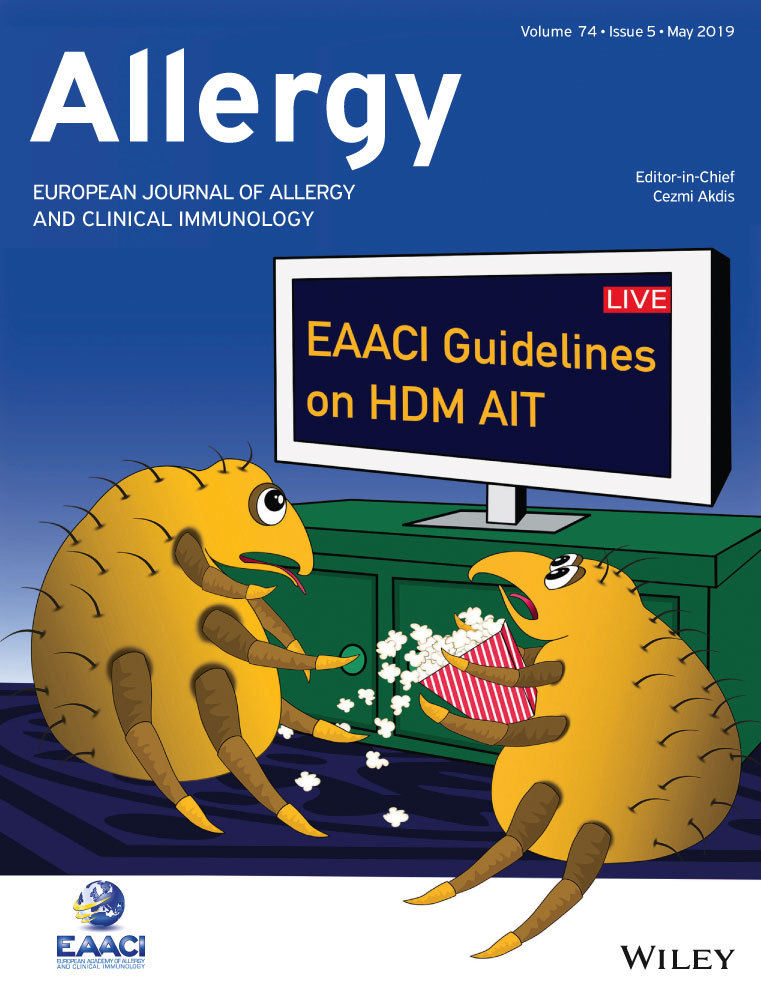Data-driven adult asthma phenotypes based on clinical characteristics are associated with asthma outcomes twenty years later
Funding information
The present analysis was funded by National PHRC 2012, the scientific committee “AGIR pour les Maladies Chroniques.” EGEA data collection was funded in part by Hospital program of clinical research (PHRC), Paris, PHRC-Grenoble, national PHRC 2012, Scientific committee “AGIR pour les Maladies Chroniques,” Merck Sharp & Dohme (MSD), and the GA2LEN project (Global Allergy and Asthma European Network). The ECRHS data collection has had multiple funding sources within each center (listed in the Appendix S1). The coordination of ECRHS3 was funded by the Medical Research Council (Grant Number 92091).
Abstract
Background
Research based on cluster analyses led to the identification of particular phenotypes confirming phenotypic heterogeneity of asthma. The long-term clinical course of asthma phenotypes defined by clustering analysis remains unknown, although it is a key aspect to underpin their clinical relevance. We aimed to estimate risk of poor asthma events between asthma clusters identified 20 years earlier.
Methods
The study relied on two cohorts of adults with asthma with 20-year follow-up, ECRHS (European Community Respiratory Health Survey) and EGEA (Epidemiological study on Genetics and Environment of Asthma). Regression models were used to compare asthma characteristics (current asthma, asthma exacerbations, asthma control, quality of life, and FEV1) at follow-up and the course of FEV1 between seven cluster-based asthma phenotypes identified 20 years earlier.
Results
The analysis included 1325 adults with ever asthma. For each asthma characteristic assessed at follow-up, the risk for adverse outcomes differed significantly between the seven asthma clusters identified at baseline. As compared with the mildest asthma phenotype, ORs (95% CI) for asthma exacerbations varied from 0.9 (0.4 to 2.0) to 4.0 (2.0 to 7.8) and the regression estimates (95% CI) for FEV1% predicted varied from 0.6 (−3.5 to 4.6) to −9.9 (−14.2 to −5.5) between clusters. Change in FEV1 over time did not differ significantly across clusters.
Conclusion
Our findings show that the long-term risk for poor asthma outcomes differed between comprehensive adult asthma phenotypes identified 20 years earlier, and suggest a strong tracking of asthma activity and impaired lung function over time.
Graphical Abstract
Risk for poor asthma outcomes varied between cluster-based asthma phenotypes defined 20 years earlier. The clinical prognosis of the cluster-based asthma phenotypes was stronger as compared to classical phenotypes. There was a tracking of asthma activity and lung function over the life course for each asthma cluster.
CONFLICT OF INTEREST
DJ reports grants from MRC, grants from EU, grants from Asthma UK, during the conduct of the study. IP reports other from Astra Zeneca, other from Novartis, other from GSK, outside the submitted work. PD reports personal fees from ALK, personal fees from Stallergènes Greer, personal fees from MEDA-MYLAN, personal fees from Chiesi, personal fees from Thermo Fisher Scientific, personal fees from Menarini, personal fees from AstraZeneca, personal fees from ASIT Biotech, outside the submitted work. CP reports grants, personal fees, and nonfinancial support from GSK France, grants, personal fees and nonfinancial support from Novartis France, grants, personal fees, and nonfinancial support from Actélion France, grants, personal fees, and nonfinancial support from BIF France, outside the submitted work. JB reports personal fees and other from Chiesi, Cipla, Hikma, Menarini, Mundipharma, Mylan, Novartis, Sanofi-Aventis, Takeda, Teva, Uriach, other from Kyomed, from null, outside the submitted work. SC reports personal fees from AstraZeneca, non-financial support from Boehringer Ingelheim, nonfinancial support from Actelion Pharmaceuticals, nonfinancial support from MSD, outside the submitted work. VS reports personal fees from TEVA, AstraZeneca and Novartis France, outside the submitted work. All other authors declare no conflicts of interests.





